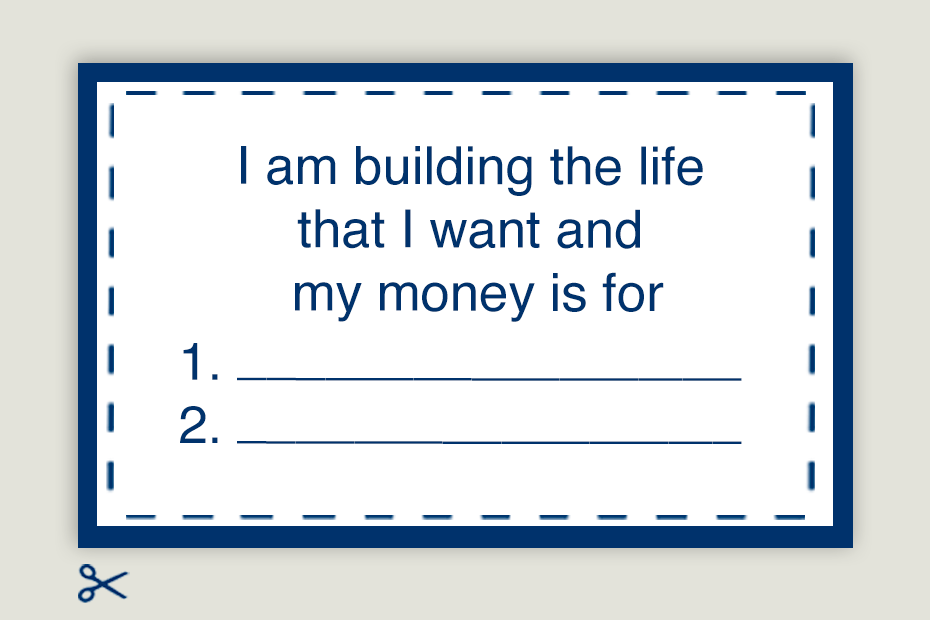Published February 3, 2023 • 8 Min Read
When I think of every milestone or major event in my life, I’ve always kept two things that were tremendously impactful: good company and a practical budget.
I budgeted ahead of my wedding and the birth of my children. I created budgets after promotions or job loss and after serious illness in my family. I’ve revisited my budget after periods of overspending or instability. A budget gave me comfort and a sense of direction.
That said, not everyone feels that way. For many, the word “budget” can be intimidating or overwhelming. For me, it used to invoke feelings similar to restrictive dieting or being managed by an overbearing boss; so over the years I’ve shifted to calling it a “spending plan” — it’s simply a plan for how you spend your money, based on your priorities and goals.
I know it might take more than a vocabulary makeover to create and manage a successful budget. To get you going, here are some best practices for how to build a budget that works for you (and tips for then sticking to your winning plan).
Who is a budget for?
Anyone and everyone. What happens in life is often out of our control. But we can, and should, take charge of our finances. And the foundation of good money management begins with a budget.
What are the first steps?
The first time you create a budget, it’s going to take some time. But don’t worry, once you’ve established one, it’ll take less and less time every time you revisit it. First, find a budget spreadsheet online that you can fill out, print or download. (I sometimes still use paper and a pen.) Your bank or government website may have tools or free templates with helpful categories for expenses such as groceries, utilities, rent, etc.
Next, download all of your bank statements and credit card statements for the last two or three months. (If you use cash, you’ll want to keep and collect all of your receipts to do this exercise.) List all of your income and expenses in their respective categories.
I divide my budget categories between needs and wants. Your needs are expenses required for survival each month (housing, car payments, insurance, etc.). My kids (and husband) insist that Lego is a “need” and I respectfully disagree; however, what is non-negotiable for me is savings. My savings are in the needs categories – these include automatic payments I make to myself for planned spending, my emergency fund, debt payments, retirement contributions and education savings for the kids. You may also have seasonal or annual expenses (vet bills, home repair, etc.). Divide the amount by 12 to determine the monthly amount for your budget. If your income is irregular, take an average of your take-home pay from the last few years and divide that by 12 for your monthly amount to start.
This finished document reveals how your cash moves and whether you have a surplus or deficit. Next, you want to create a copy with this question in mind: “How much should I be spending in each category?” This is your spending plan, a flexible guide for reference. Without action, however, this is just a wish list. You have to start tracking your expenses to see if you’re spending in line with your plan.
Questions to ask yourself
-
Did I account for all of my income and expenses?
-
Are my numbers accurate?
-
Did I include a category for savings?
-
Do I need professional financial help?
-
Did the money I earned last month exceed my expenses?
-
If so, how much is left over for my goals?

How often should I revisit my budget?
If you feel out of control when it comes to your finances, I would create a spreadsheet and track earnings and expenses monthly for at least six months. After that, consider reviewing it every few months, after major life events or whenever you start to feel off track. Be patient and kind with yourself throughout the process. Managing your money is a journey and you will have wins and setbacks as you create new habits.
What if I have trouble sticking to my budget?
Your budget may be too restrictive. Life is unpredictable and not always easily categorized. Look at your budget and simplify. Take your income. Subtract your mandatory expenses, your savings and your debt repayments. What’s left over? Give yourself permission to spend this on whatever you deem to be valuable. Also, if you’re budgeting for the first time, or returning to it after a while, a few stumbles are just part of the process. Once you’ve started (which is often the hardest part), giving up would be like turning the heat off just before the water boils. Keep going.
The simple act of using cash can help us be more mindful of our spending. Years ago, I would take a specified amount of cash out of the ATM at the start of each week and use that for discretionary spending. You could also put cash into envelopes at the start of each month for spending in different categories.
Getting others involved can also help. Consider telling a trusted friend or family member about a budget goal. For example, if you plan to bring lunch to work four days a week to reduce spending in your “eating out” category, ask a co-worker to join you or commit to texting someone on Fridays with your progress.
Finally, when we make choices, our brains need time and practice to consider the long-term ramifications of our actions. (“If I buy this, will I be satisfied?” versus “If I buy this, what will this mean for my RRSP contribution goal?) I try to stick to a 24-hour waiting period before making unplanned purchases and I keep a card in my wallet that reminds me of my spending values and financial goals.
Fill this out, print it for your fridge or keep it in your wallet to remind you of your priorities and keep your spending in line with your values, whether that be health, family, adventure or financial freedom.

How do you take your budget to the next level?
Your budget should help you achieve your goals. Identify your short-term goals (within a year), mid-term goals (within five years) and long-term goals (at least 10 years out). Without short-term savings or planned spending, including for vacations, holiday celebrations, gifts etc., your finances can veer off course. (When a family member got engaged, I saved $115 monthly for 13 months for her destination wedding; it helped to avoid taking on unnecessary debt.) For long-term goals, understand that time is a powerful force for your money so start planting your seeds immediately and regularly so one day you’ll reap a bountiful field.
Your budget should also reveal potential excess. Go through your expenses line by line. Where can you save? Do a subscription audit and see what recurring expenses can be eliminated or paused. Call your service providers (think phone, internet and television fees) and try to negotiate better rates. If you make cuts, earmark the extra money for your goals.
Automate your money, using your budget as a guide. In addition to automating bill payments, set up a monthly money transfer to your various savings goals. (You may use multiple savings/investment accounts for different needs.) It might also be a good idea to automate a money transfer into a separate chequing account associated with a debit card that you can use for guilt-free spending.
If your income is stable, a zero-sum budgeting strategy might work for you. This is where you give every dollar a job – you take all of your income and you allocate the money to something so at the end of the month, your balance is zero. It’s a much more detailed approach, but knowing that each dollar you earned has been used intentionally each month can be very satisfying.
Your budget to-do checklist
-
Collect documents, including bank statements, credit card bills, pay stubs, etc.
-
Save your receipts. If you often use cash, save a month’s worth.
-
Find a sample budget or spreadsheet or fill one out online.
-
List your income and expenses in the respective categories.
-
Go line by line through your expenses and identify excess, see where you can reduce costs, etc.
-
Create a copy and set your own limits and targets. This is your spending plan for reference.
-
Make a list of short-term, mid-term and long-term goals. Assign money to those goals.
-
Track your spending over the next month and create another spreadsheet.
-
Assess how close you are to your spending plan and adjust.
-
Keep going. There will be ups and downs — you can do it.
Your budgeting strategy may vary slightly. What’s most important is finding something that works for you. Wherever you are in your budgeting journey, you deserve a high five! With a budget, you’re not at the mercy of what’s in your bank account. You’re taking charge and using your money to build the life that you want.
This article is intended as general information only and is not to be relied upon as constituting legal, financial or other professional advice. A professional advisor should be consulted regarding your specific situation. Information presented is believed to be factual and up-to-date but we do not guarantee its accuracy and it should not be regarded as a complete analysis of the subjects discussed. All expressions of opinion reflect the judgment of the authors as of the date of publication and are subject to change. No endorsement of any third parties or their advice, opinions, information, products or services is expressly given or implied by Royal Bank of Canada or any of its affiliates.
Share This Article






